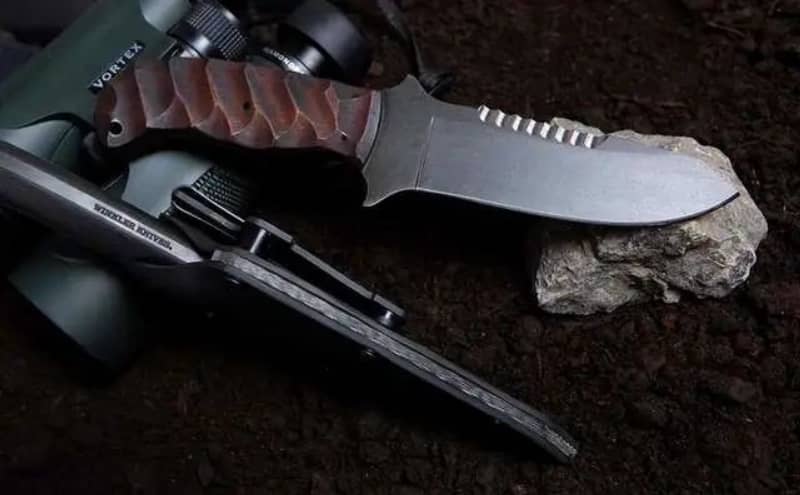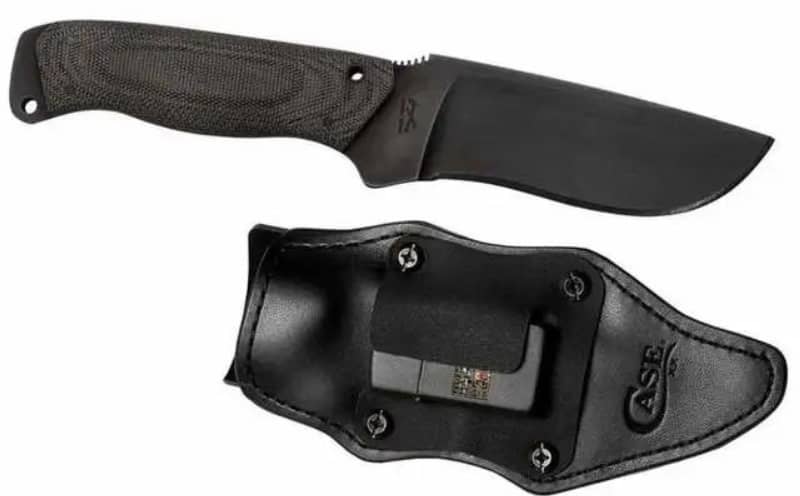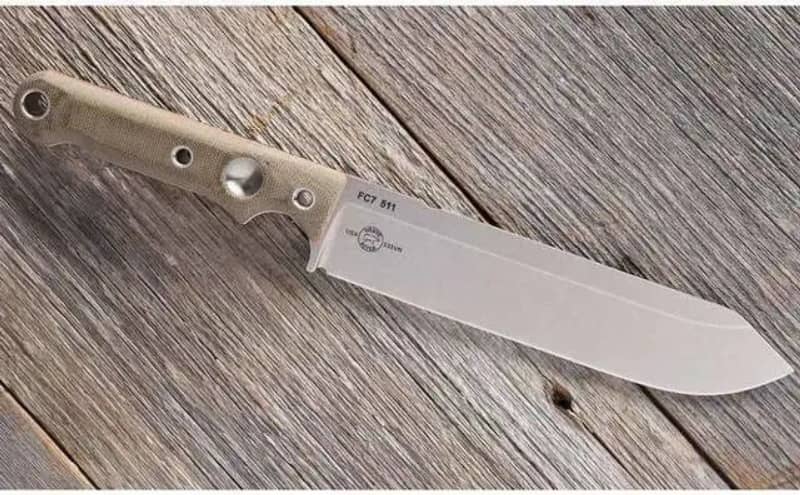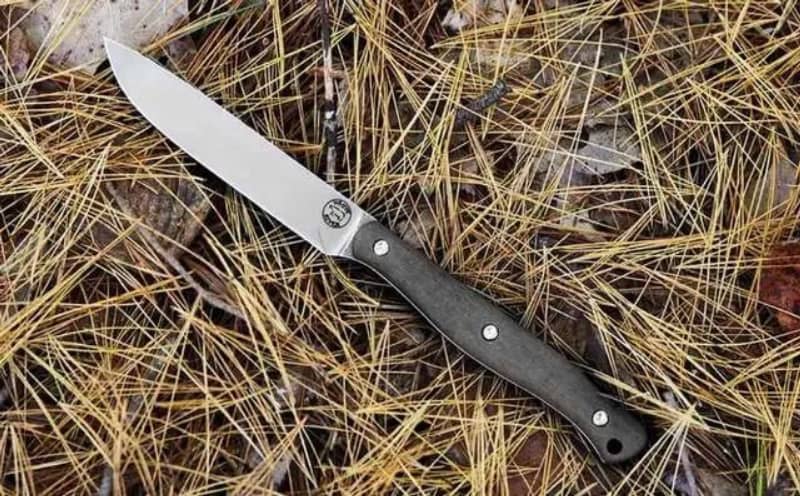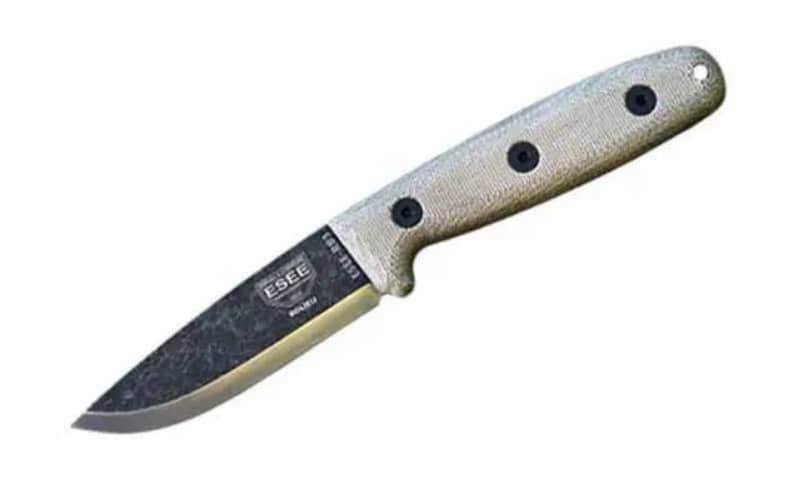Micarta is one of the many materials used for knife handles. Micarta has been used for over a century and is still very popular.
Micarta is not a new material, in fact, it has been used for over 100 years. Unlike natural materials, Micarta offers properties not found in other materials. We’ll have a look at what Micarta is and what makes it the best material for making knife handles today.
What is Micarta?
Micarta is a trade name for all products, not just a generic material. Micarta is a durable composite material made from a base material suspended in epoxy resin. Nopolis Incorporated owns the trademark for this term.
The material is compressed under heat and is classified as a thermoset product. A famous person associated with the invention of Micarta is George Westinghouse. During his lifetime, Westinghouse never stopped creating new things, and the initial development of the Micarta we know today took place between 1900 and 1910.
Because of the way Micarta is manufactured, it has a wide range of applications for insulation in electrical systems. It’s unknown when this material became a popular knife handle choice, but it’s safe to say that it has never been more popular than it is today. Like many materials of the era, such as Bakelite and celluloid, Micarta found its way into craft use.
How is micarta made?
In the past, fabric and paper were used as base materials, but today we have a variety of other types including carbon fiber and glass. Knife handles are a rather narrow end use for Micarta.
The process of making micarta is relatively simple. The material is soaked in whatever type of thermoset material it is going to use, and once impregnated with the resin, it is subjected to intense heat and pressure to form the sheet. Micarta was also made in large chunks decades ago.
These chunks are a favorite for revolver grips and other large three-dimensional forms. There are people looking for these vintage micarta items at garage sales and estate auctions. The most prized is a micarta paper, which is the closest in texture and color to elephant ivory.
Who Uses Micarta?
Major manufacturers using this material order large quantities of the product according to its specifications. Smaller companies tend to use what is available in the existing supply chain, which is why you end up seeing very similar colors.
Although you may have to spend thousands of dollars to get micarta in custom colors and textures. If you find that you want to put a fancy handle on a knife, it’s a good idea to call and ask if there are companies that will sell scraps.
Micarta Vs. G-10
True Micarta is not the same as G-10 or other types of thermoset laminates. Many people tend to use the terms interchangeably, but strictly speaking, true micarta is made using paper, burlap, canvas, or linen in resin. What makes the G-10 different is the use of glass cloth, a material made from carbon fiber filaments.
Micarta is generally heavier than G-10 and carbon fiber laminate, but as far as handles are concerned, the difference is negligible, not much different than standard hardwoods. Bakelite, while common on many products and weapons, is not the same as Micarta, although it serves many of the same roles.
Compare Micarta to other handle materials
As micarta has grown in popularity, more and more companies are offering it as an option, sometimes by mistake. Genuine Micarta material is not as durable as G-10, but it is more durable than wood or leather. G-10 is a substantially absorbent material. Most handle materials, including Micarta, will absorb some level of water, sweat or blood.
While it is unlikely that it will remain in the material permanently, it is recommended that you keep the micarta clean. Usually, hot soap and water will do the trick, and, while you can get oil on it, it will stain a bit. This has to do with the fact that Micarta’s materials are paper or fabric, much of which is exposed, albeit fully impregnated with resin.
Wooden handles are prone to minor problems, and they can easily split or crack if installed incorrectly. Wooden handles aren’t particularly good for heavy outdoor tasks like chopping wood or striking batons. Wood also has problems absorbing moisture from the environment. In particularly wet conditions, the handle may swell and crack on the pin. Micarta does not have the grain of wood.
When comparing a Micarta to carbon fiber, it comes down to two metrics: durability and weight. Carbon fiber is not a particularly durable material, although it is very light. As far as handles go, carbon fiber is an excellent material for inlays and tops, although it’s not made of full size. When compared directly to Micarta or G-10, carbon fiber is harder to shape and harder to apply a machined textured finish.
The best knives with Mita handles
Linen and canvas Micarta are my favorite knife handle materials. The reason I find these types of micartas the best is that they offer the greatest degree of functionality in the toughest environments. I like the G-10, but I find it gets covered in blood and fat from hunting and gets icy quickly. While it’s a very durable material, it feels more like plastic than Micarta and, for lack of a better word, will never build character like wood, leather, or Micarta.
Linen or canvas Micarta provides the texture I want, and I use a lot of the product in my daily use without any negative side effects. I have used every single knife I have listed here for months or years and I can highly recommend them.
- Winkler Utility
This knife was the first Winkler I ever owned and it remains my constant companion. I’ve used this knife extensively for everything from opening paint cans, cutting heavy belts to prying pallets off, and even building countertops and interior demolition.
I have spent hundreds of hours on this knife and have been very comfortable the entire time. The Micarta handle is very strong, although it now has some gouges from use. It’s not cheap, retailing at $450, but it’s worth the money.
- Case/Winkler No.6
The No. 6 Utility Tool, a collaboration between Case Knives and Winkler, is a heavy-duty knife designed for some of the toughest projects. I took this knife into the field and lent it as a deer skinning knife.
Thanks to its deep, curved belly, it’s great for chopping and is just as good in the kitchen as it is outdoors. Although no longer available on the Case website, my version has a tan Micarta grip, which is very nice. While the contours don’t exactly conform to my hand like what I’ve experienced directly from Winkler’s knives, it feels great on its own and will last a lifetime. MSRP is $430.
- White River FC7
An attractive broadsword, the FC7 is my hunting knife for deer hunting. While it looks like a broadsword, my experience in the field tells me this is probably the best broadsword money can buy today. It looks gorgeous and the orange liner on the green Micarta certainly adds color to it. I see no reason not to continue using this product. The MSRP for the FC7 is $330.
- White River Exodus 4
The Exodus 4 is the knife I use every day in the kitchen for almost every task. This is probably the most washed knife on this list. It is constantly exposed to soaps, oils and all other forms of kitchen materials. It makes an excellent carrot peeler using the square edges of the spine.
My version has black micarta panels and they hold up really well with constant washing and use. This knife and its handle have probably been exposed to more corrosive materials than any other product, and it has even been accidentally put in the dishwasher several times. Exodus 4 is easy to grab even in kitchen nightmares. MSRP is $175.
- Esee Camping Lore RB3
The knife itself has some drawbacks. Steel is sharp but requires maintenance, and it’s not very resistant to blood. My knife has been discontinued and Esee now sells a version with the same size but a different look. The suggested retail price for that knife is $190.
I can’t remember how much the version of “Lorrey” cost years ago, but it withstood my abuse. The grip was Micarta, who saw more punishment than they deserved. The shape of the blade wasn’t great for handling four or five deer in one night, and I quickly learned my lesson and switched to a larger knife. I will say this knife has been a great friend in the field during the years I have used it and I look forward to passing it on to my kids as they grow up.
Нажмите, чтобы получить больше EDC-ножи Shieldon и инструменты весело.

